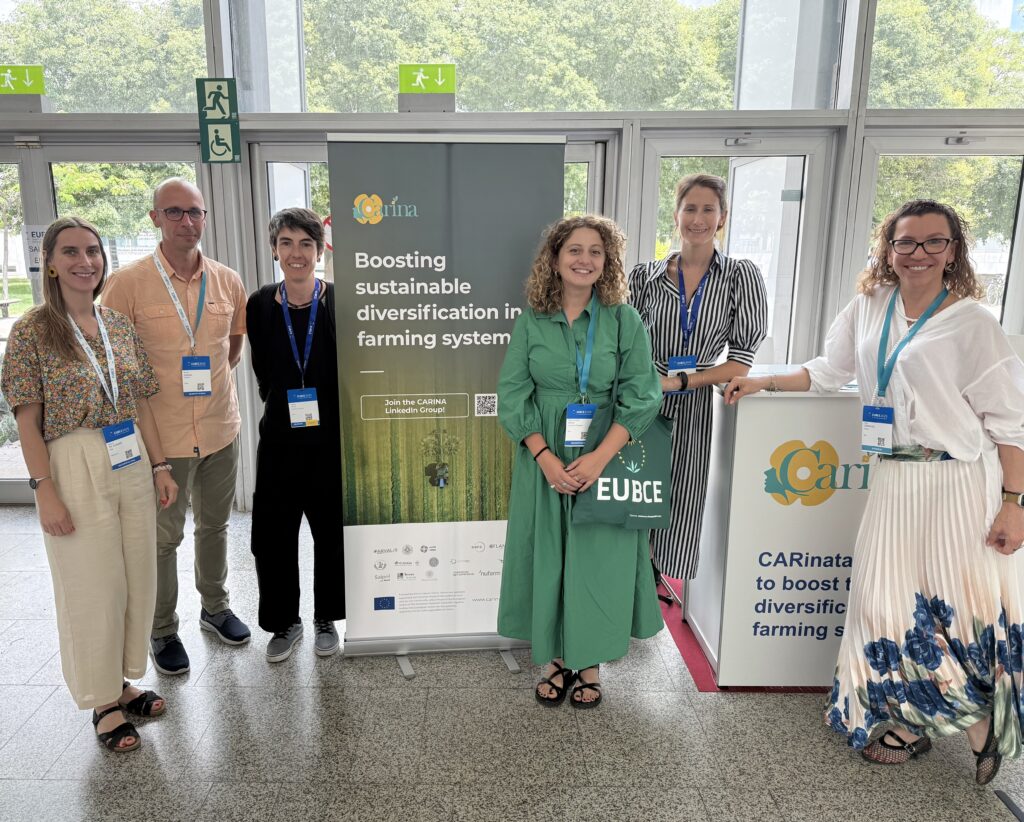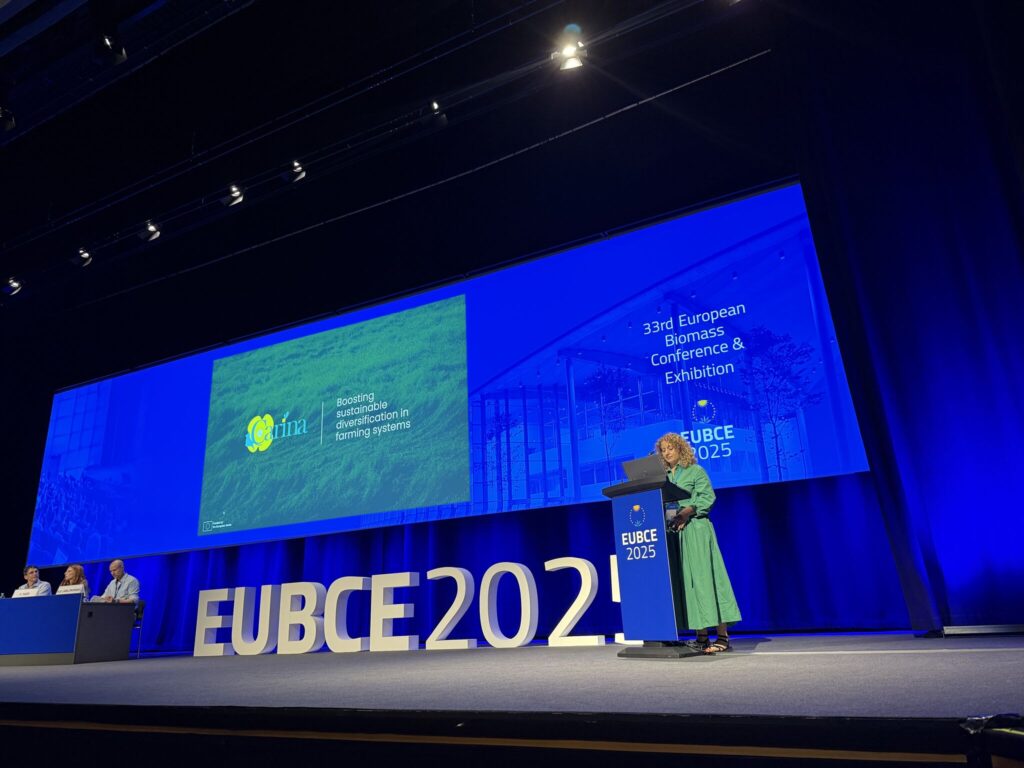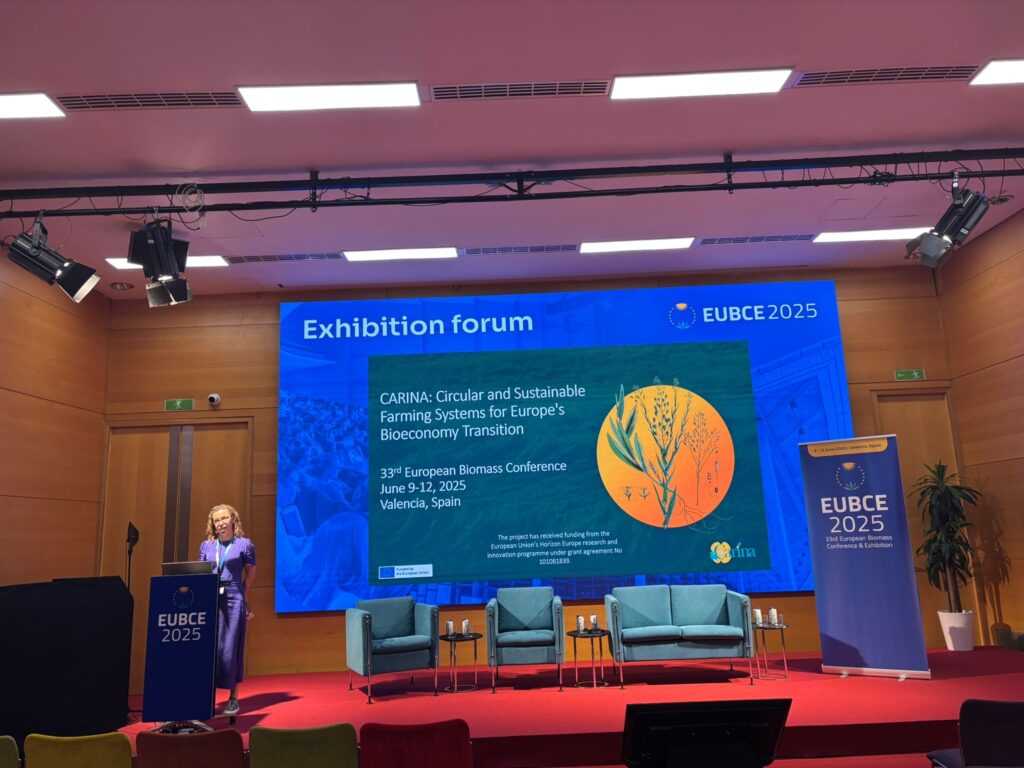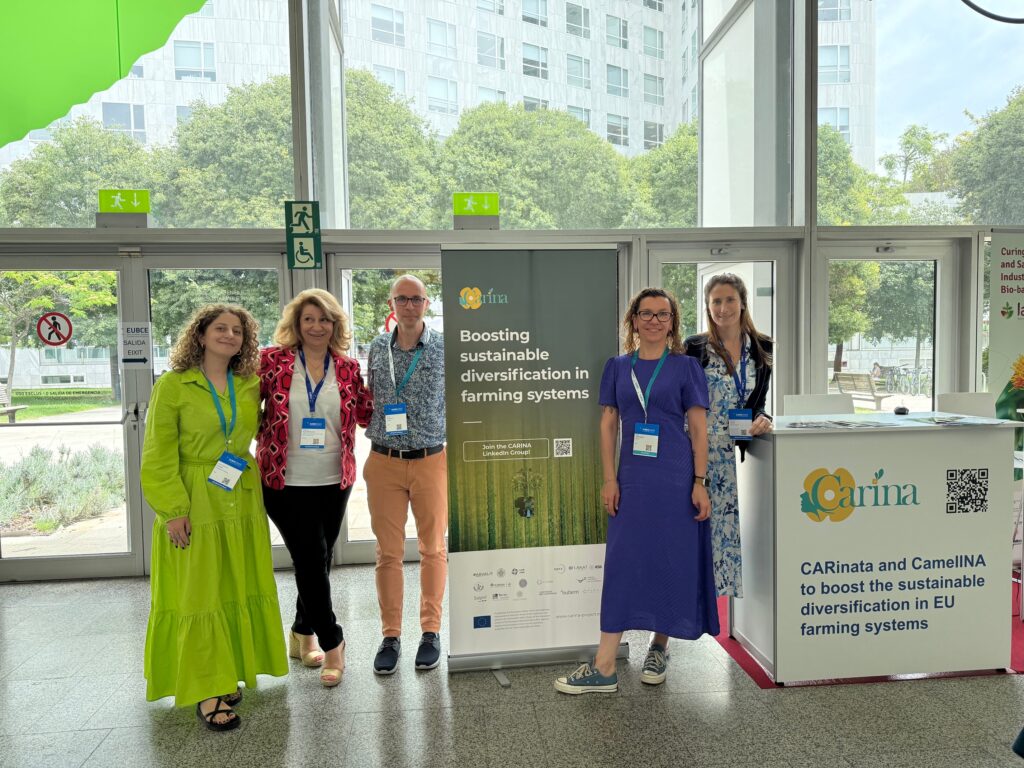From 9 – 12 June 2025, CARINA was proudly showcased at the 33rd European Biomass Conference & Exhibition (EUBCE) in Valencia, Spain. EUBCE is one of the world’s leading events for the biomass and bioeconomy sectors, bringing together scientists, policymakers, industry experts, and stakeholders to share research, technologies, and strategies for advancing sustainable bio-based systems.
CARINA participated in the event with a dedicated stand, offering visitors an opportunity to learn about the project’s mission, activities, and early results. The stand attracted attention from participants across sectors interested in sustainable agriculture, bio-based products, and crop diversification strategies.

In addition to the exhibition presence, two key presentations highlighted CARINA’s contributions to the bioeconomy transition:
“Camelina: a new intermediate crop in Europe”
On June 10, Maria Giovanna Sessa from University of Bologna (UNIBO) took part in the panel “Low ILUC alternatives to biofuels and biobased products”. She presented results from CARINA’s double-cropping trials in northern Italy, where camelina was tested as a winter intermediate crop followed by sunflower.
Key findings included:

“CARINA: Circular and Sustainable Farming Systems for Europe’s Bioeconomy Transition”
On June 11, Olga Verheles from PEDAL Consulting presented CARINA at the EUBCE Exhibition Forum. Her talk focused on the project’s approach to agricultural diversification through camelina and carinata, supported by results from more than 250 field trials across Europe and North Africa.
She also shared insights into:

Both presentations reflected the project’s core objective: to promote sustainable, low-input oilseed crops that contribute to a more circular and resilient agricultural model across Europe.

The CARINA team thanks all visitors and participants who engaged with us during EUBCE 2025 and looks forward to continuing the conversation on sustainable innovation in agriculture.

SUBSCRIBE TO A NEWSLETTER
Funded by the European Union. Views and opinions expressed are however those of the author(s) only and do not necessarily reflect those of the European Union or the European Research Executive Agency. Neither the European Union nor the granting authority can be held responsible for them.